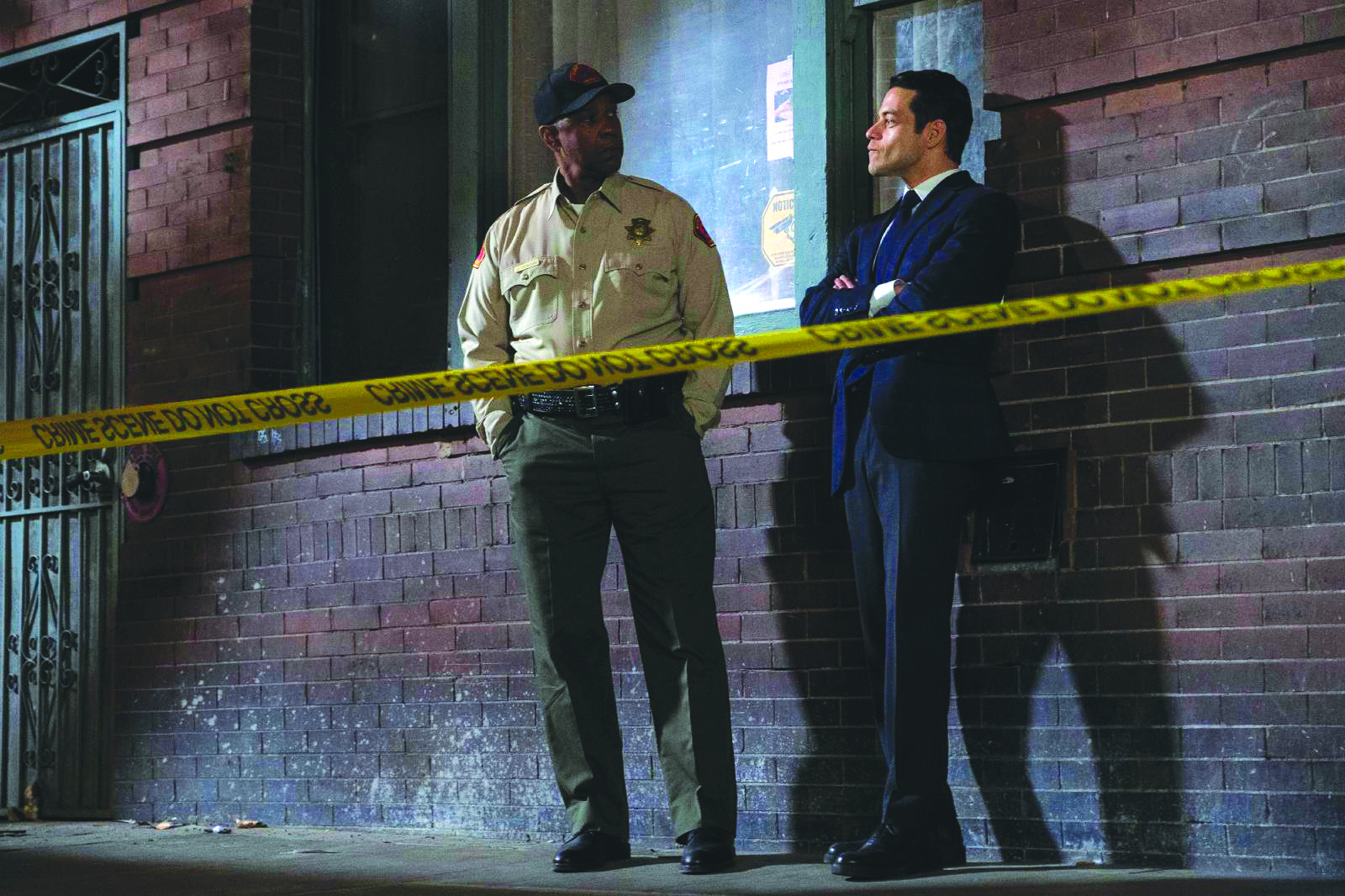14 ways to spread a little happiness this Valentine’s season
This Valentine’s Day, spread the love without spreading Covid with these acts of kindness that you can do right from home (or just outside your home). From leaving a small gift in your mailbox for your mail carrier to giving the critters in your backyard a place to escape the cold, here are 14 ways to bring some joy to family and friends, local businesses, and people and animals in need, all from a safe distance.
By Matt Ingersoll & Angie Sykeny
Purchase a wish list item for a local charity
For a more personal way to lend a hand than just donating money, most charities in the Granite State will post a “wish list” accessible on their website, kept up to date with items of the greatest need. Some also provide a link to an Amazon Wish List page as well — items can be ordered online and shipped directly to that organization’s address.
Marguerite’s Place, for instance, a transitional living program in Nashua for women and children in crisis, is in need of basic home essentials like laundry detergent, towels, trash cans and storage bins. The full wish list is available to view on the website, according to director of development and public relations Christa Tsechrintzis, with an additional link to Amazon to help you choose the right product brands.
The Concord Coalition to End Homelessness, office administrator Teri Gladstone said, is in the greatest need of boots, ski gloves, jackets and other hand, foot and body warmers.
“Due to Covid restrictions by the CDC, we can only accept brand new clothing items,” she said. Items can be shipped to its temporary location, at the First Congregational Church of Concord.
Pick up litter
Show some love to the environment by picking up litter around your neighborhood. “Picking up litter not only helps make the environment safer and healthier for people, but also for the plants and animals in the community,” said Kimberly McCloy of Litter Crew (littercrew.com), a group of New Hampshire residents who are working to make the state litter-free. “Even if you only spend five minutes a day, it will make a noticeable difference.” All you need is some gloves and a trash bag, she said, and beware of any litter that could be hazardous to you, such as needles or any items that have been in contact with bodily fluids. “You can contact your local authorities to come dispose of these items safely,” McCloy said.
Send a care package overseas
Make the day of an Army, Navy or other military branch member from New Hampshire who is currently serving overseas by assembling and sending your own special care package.
Deborah Luszey of Operation Care for Troops, a nonprofit based in Nashua, has worked to send care packages out to local troops since around 17 years ago, when her son was first deployed to Iraq.
She said the process starts with obtaining a flat rate shipping box — you can order military service kits online for free from the United States Postal Service and have them shipped directly to you. The kits include address labels, custom envelopes and enough tape for six boxes.
Many of the most requested contents you can fill your care package with may also be items you already have in your home.
“It’s usually very dry where they are, so a lot of times you can put some lotions or some hydration products in the box,” Luszey said. “Food is also a great thing, so things like protein bars, beef jerky, peanut butter, coffee [and] tea. We’ve done canned fruit. … Zip-lock bags can be good, because you can roll them up tight and oftentimes they’ll reuse them for other things.”
You could even include a handwritten letter, or puzzles cut out of newspapers or magazines.
“Anything you can do to just give them five minutes where they can be somewhere else from where they are,” she said. “You can get friends or your kids to draw pictures … and put that stuff on top so that it’s the first thing they see when they open it up.”
Although Operation Care for Troops organizes several bulk shipping events, the next of which is scheduled for late March at the Hudson Fire Department’s Burns Hill Road fire station, care packages can be sent at any time. More details can be found at octnh.org, or you can email Luszey directly at [email protected].
Foster a pet
If you want to help a pet in need but don’t have the means to give it a forever home, consider fostering, which allows you to care for an animal at your home temporarily until it gets adopted or can return to the shelter. Since kittens cannot be sold or adopted until they are at least eight weeks old, according to New Hampshire law, foster homes are most commonly needed for pregnant and mother cats and their kittens until the kittens are old enough to return to the shelter and be put up for adoption.
“In order to provide for these kittens and nursing feline mothers, we need a strong cadre of foster homes ready and able to take these creatures into their homes,” says the New Hampshire Humane Society website.
Fostering protocol varies from shelter to shelter, but the most standard requirements are that you own your home or have permission from your landlord to foster a pet; any other pets currently living in your home are up to date on their vaccinations; and you have a space where you can secure the foster pets from other pets or young children in your home. Check with your local animal shelter to see if they have any pets in need of foster homes.
Buy Girl Scout cookies for someone
It’s Girl Scout cookie season, and this year for the first time you can also get Girl Scout cookies delivered through GrubHub. Go to girlscoutcookies.org, where you can enter in any street address for them to be shipped to.
“[The cookies] are $5 per package, with proceeds staying right in the troop you ordered from,” said Ginger Kozlowski, communications manager of the Girl Scouts of the Green and White Mountains.
She said it normally takes anywhere between two and 15 business days for your shipped order to arrive at its destination.
The Girl Scouts of the Green and White Mountains also has a Gift of Caring program, which gives you the opportunity to buy cookies to donate to military service members and hometown heroes, like firefighters, police officers and EMTs. Visit girlscoutsgwm.org for details.
Knit for a cause
Use your knitting or crocheting skills to help someone in need. New Hampshire volunteer groups like Neighbors Helping Newborns, Stitching up the World and the New Hampshire chapters of Project Linus collect donations of handmade knitted and crocheted items like blankets, caps, scarves and shawls and distribute them to patients at local cancer centers, premature babies at local hospitals and children dealing with illness or trauma. “We’ve had people as far away as Arizona donate hats for cancer patients,” Stitching up the World’s website states. “We gladly accept completed items and will make sure they get to the proper destination.” If you need some inspiration, the groups also have a variety of patterns for knitted and crocheted items online.
Donate life
There are more than 5,000 people in New England waiting for a life-saving organ transplant, according to the Donate Life New England website. Registering to be an organ donor means that, in the event of your death, your organs could add years of life or provide a better quality of life to as many as 50 people. If you aren’t yet registered, you don’t have to wait until the next time you renew your driver’s license or go to the DMV in person; you can do it right from home in minutes online at dmv.org/nh-new-hampshire/organ-donorregistering. Not only could you be helping people in need of an organ transplant, but you could also, in a different way, be helping your grieving loved ones, said Susan Diggins, RN, Quality Management Coordinator of the Center for Quality & Safety at Southern New Hampshire Health. “We understand [a death] is a difficult time for family members,” Diggins said, “but knowing their loved one’s death may help another person brings some level of comfort to them.”
Leave a gift for your neighborhood mail carrier
Even though ethics guidelines prohibit postal employees from accepting cash from customers, or any gifts with a value greater than $20 per household, there are still all kinds of small gestures you can make to show your gratitude for your local mail carrier.
“We have seen a swell recently in homemade cards and window or lawn signs, sometimes created by children … to show their appreciation,” said Steve Doherty, strategic communications specialist for the United States Postal Service’s Northeast Region. “Around the holidays many people will reward their carrier with a small gift, such as a mug or tie, or a gift card to a local restaurant or coffee shop.”
If you know your neighborhood letter carrier personally, Doherty said, treats like home baked goods or store-bought candy can make good gifts. In the past year homemade masks, small hand sanitizer bottles and even rolls of toilet paper have become common, he said.
Talk on the phone to someone stuck at home
You can help someone who has experienced loneliness from the pandemic just by picking up the phone and talking to them — in fact, that’s exactly one of the tasks you can volunteer to perform through the CareGivers, a program of Catholic Charities New Hampshire that services clients over the age of 62 in the Greater Manchester and Nashua areas.
They’re known as reassurance calls, according to CareGivers executive director Jim Wilkie, and they’re one of several volunteer opportunities you can sign up for, in addition to sending birthday cards to clients, delivering groceries to their doorstep and driving them to medical appointments.
“With the pandemic, we’ve recognized the need to really reach out to our clients that have been stuck at home and feeling really isolated,” Wilkie said.
He said volunteers may be given a short list of phone numbers of clients who have expressed interest in receiving calls, talking once or a few times a week and building relationships.
“We always hear these little narratives … from people sharing their happy moments and just talking about their lives,” he said.
Have a meal delivered to a family member or essential worker
Give a relative, friend or essential employee the gift of delicious food right on their doorstep. Local Baskit in Concord is offering online options for gift meals to be delivered to local health care workers and first responders, as well as to tip delivery drivers — go to shop.localbaskit.com and click the “tipping/donation” tab for details. Owner Beth Richards said she’s arranged for meals to be delivered to employees at Concord Hospital and at Merrimack County Nursing Home in Boscawen, as well as to the local fire department.
“It can be either a meal kit or prepared food option from one of the selections that we have that week,” Richards said of the available meals.
Ding Dong Deliver, a ghost kitchen launched last year by Great New Hampshire Restaurants, provides ready-to-heat meal packages to all addresses in Manchester and Bedford.
“We’ve seen a lot of people with older parents who aren’t going out do dinner use Ding Dong Deliver, and even Realtors who gift the meals to new homeowners,” said Nicole Barreira, director of marketing and menu development for Great New Hampshire Restaurants. Deliveries are made on Thursdays, Fridays and Saturdays, between 1 and 5 p.m.
Make backyard friends
Show some kindness to the critters in your yard by providing them with places to shelter. According to research by the UNH Cooperative Extension provided by Natural Resources Field Specialist Wendy Scribner, there are around 45 species of birds and mammals in New England that use cavities in trees and other wood materials and structures for denning, roosting and nesting. You can lay out some logs or brush piles, or install a birdhouse or bat house.Bats can be a bit picky, so if you’re new to bat houses, be sure to do some research first. (Scribner recommends Bat Conservation International as a resource for building, buying and installing bat houses; visit batcon.org/about-bats/bat-houses.) Making your property more hospitable to wildlife benefits not only the animals, Scribner said, but also yourself if you’re someone who enjoys having nature around. “There is joy in being able to watch wildlife, birds, and, yes, the squirrels too, and feel that you are helping them,” she said. “Most of all, you will enjoy the opportunity to see and appreciate the creatures with whom you share your land.”
Order a personalized gift basket
You don’t need a special reason to show a friend, family member or even your local mail carrier that you appreciate them. Caring Gifts in Concord takes orders for its own specialty or customized gift baskets and packages for all occasions, including “just because.”
“People can call or email us … and we ask them how much they want to spend, or maybe they give us a dollar amount, and then we go from there,” shop co-owner Donna Mark said. “We can ship nationwide and we deliver within the greater Concord and Manchester area.”
The shop has several of its own themed baskets and packages to choose from that will often feature foods or personal care items — a movie lover’s package, for instance, features a jumbo popcorn box filled with caramel corn, chips, candy and cookies, while others can include wine bottles, crackers, bath gels, soaps and more.
“We recently did one for a corporate gathering where we shipped small bottles of sparkling cider or Champagne and different snacks … and they enjoyed them during a cocktail party they had over Zoom,” Mark said, “so they really can be for any occasion.”
The Manchester Craft Market, a store located inside the Mall of New Hampshire, features all kinds of locally made items that can also be shipped as gifts, according to owner Jessica Moores, including cookie mixes, jams and jellies, teas and coffees, maple products and more. Sellers post details on their items to a public Facebook group, which can be accessed through the shop’s website. Pop-up Facebook live sales are often featured too.
Make a mask
What better way to show someone you care during a pandemic than with a homemade mask? Seacoast Mask Makers, a group of New Hampshire volunteers who made masks for medical facilities and essential businesses when masks were in short supply, has written instructions and photo and video tutorials on its website for simple, pleated, and nose-fitting cloth masks. With some super basic sewing skills, you can make a simple mask with just a nine-inch by 12-inch piece of cotton fabric in a color or design you think your recipient would like, and a seven-inch-long piece of rope elastic or flat elastic. (For a pleated mask, you’ll need an eight-inch by 14-inch piece of fabric, and for a nose-fitting mask you’ll also need some flat plastic twist ties.) Visit seacoastmaskmakers.org/get-involved/#mask-making for the full instructions and tutorials and other mask-making information and resources.
Cherish memories
Send someone you’re missing this Valentine’s Day a personalized photo card or gift. “We are oftentimes reminding our customers that many photos they have on their phones … of friends, children, and events are memory makers that can make wonderful gifts for family and friends,” said Michael St. Germain, owner of Concord Photo Service. Through Concord Photo Service and other local shops that offer photo services, you can place an order online to turn your digital photos into a print, collage, canvas wall art or photo book, or have them printed on mugs, jewelry, T-shirts, calendars, ornaments and even face masks. “Items as simple as a custom card with a photo on the front can tell a story that we have forgotten,” Germain said.
Local animal shelters with foster programs
• New Hampshire Humane Society (Laconia, 524-3252, nhhumane.org/adopt/foster)
• Salem Animal Rescue League (893-3210, sarlnh.org/foster)
• Pope Memorial SPCA (Concord, 856-8756, popememorialspca.org/volunteer)
• Humane Society for Greater Nashua (889-2275, hsfn.org/get-involved/volunteer)
• Manchester Animal Shelter (628-3544, manchesteranimalshelter.org/fosterform)
• Greater Derry Humane Society (434-1512, derryhumanesociety.com/we-need-volunteers/fostering-a-rescue-animal
And for your sweetheart…
There may still be time for you to get your Valentine’s Day reservations or takeout orders in – visit hippopress.com for our annual dine-in and takeout listings at local restaurants, candy shops, bakeries and more. Be sure to call or visit a participating eatery’s website directly for the most up-to-date availability.
Knitting and crocheting charity groups
• Neighbors Helping Newborns (serves southern New Hampshire, 382-8504, neighborshelpingnewborns.org, donations will be held until March due to pandemic)
• Project Linus (projectlinus.org; facebook.com/nhseacoastprojectlinus; facebook.com/projectlinussouthwestnewhampshire; drop-off locations in Candia, Derry, Raymond, Concord, Goffstown, Henniker, Hooksett, Manchester, Milford, Nashua, the Seacoast and other parts of the state.
• Stitching Up the World (based in Candia, 587-0603, candiawomansgroup.org/stitching)
Photo prints and gifts
• Concord Photo Service (31 N. Main St., Concord, 225-5891, concordphotoservice.com)
• Hunt’s Photo & Video (4 Vinton St., Manchester, 606-3322, huntsphotoandvideo.com)
• Chris Digital Photo Print (346 Merrimack St., Manchester, 264-6205, chrisdigitalphotoprint.business.site)
• EverPresent (99 Rockingham Park Blvd., Salem, 435-2202; 1301 Elm St., Manchester, 819-5182; 800 Islington St., Portsmouth, 967-4385; everpresent.com)






